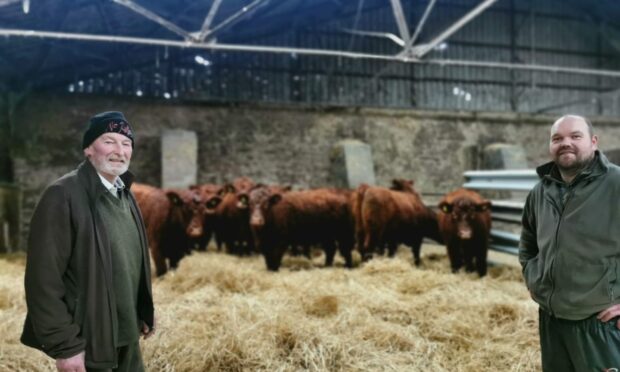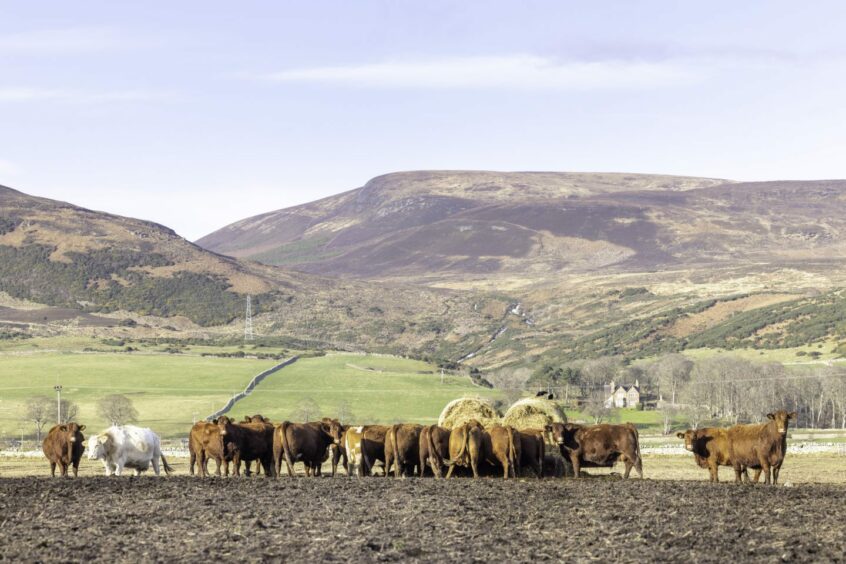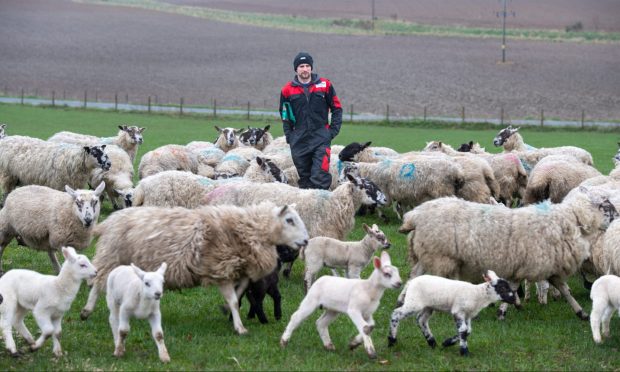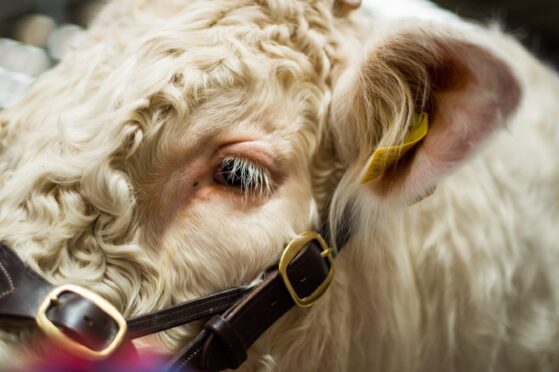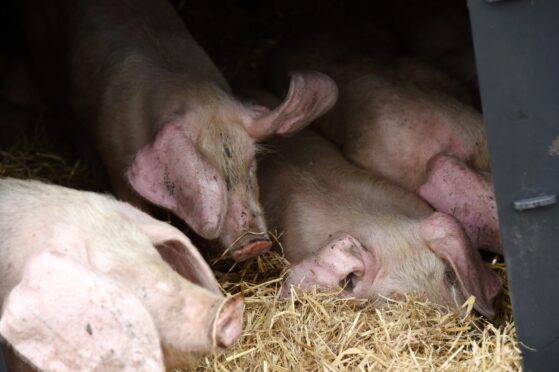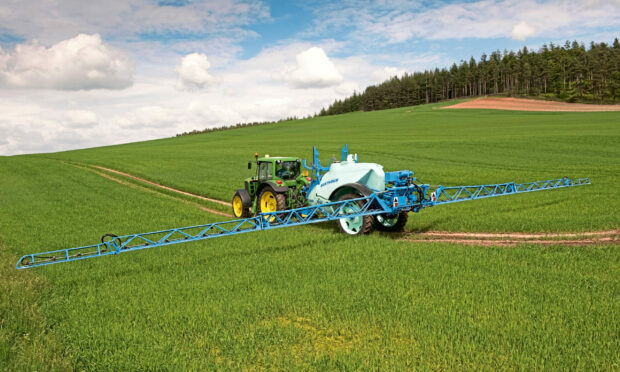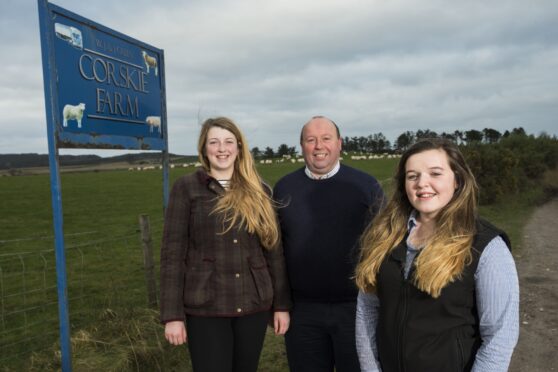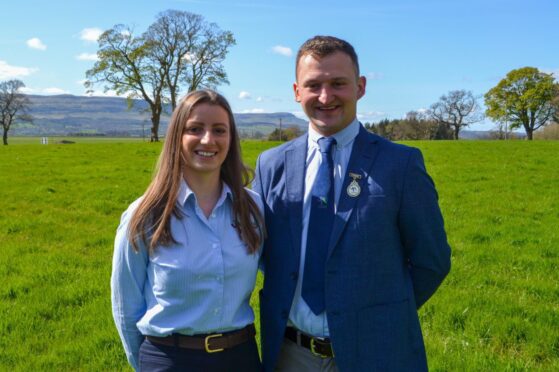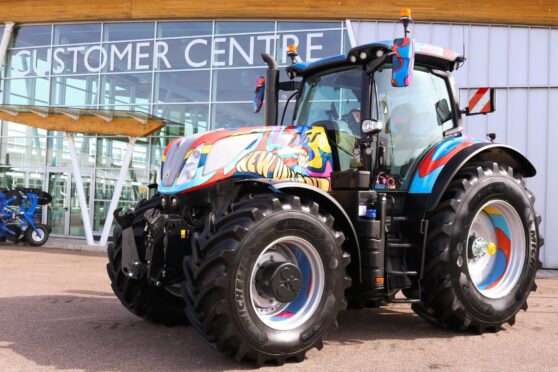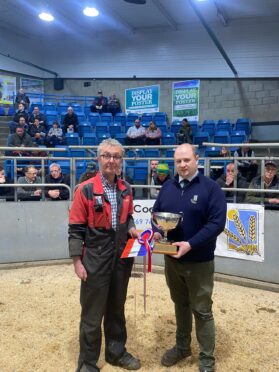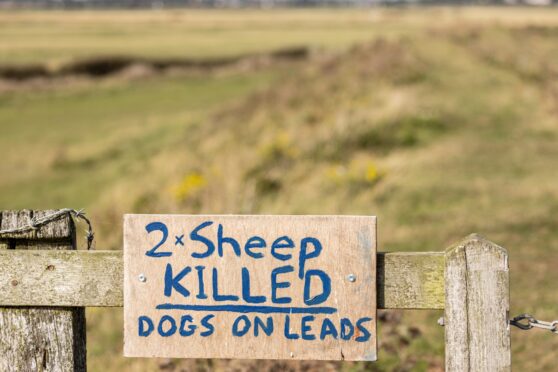Final sale preparations are well underway for the McCall family from Golspie who are heading to the Luing Cattle Society’s premier event at Castle Douglas next week with 10 heifers and two bulls.
The breed has been the backbone of the family’s farming business at Culmaily since the 1960s, running hardy, low maintenance suckler cows which go on to produce progeny suitable for the store and breeding ring.
For father and son team Angus and Ewan, with their respective wives Evelyn and Claire, and the next generation Isla and Alan, it’s the breed’s ability to be outwintered in the north of Scotland all year round that is one of the key attractions.
The farm has been in the family for 51 years and they were fortunate to be able to purchase the unit in 2016 after 50 years as sitting tenants.
A further 120 acres of rough grazing near Dornoch is taken as summer grazing for cattle, as well as 50 acres next door to home.
“Luing cattle are great animals for outwintering and can stand all weathers,” said Ewan.
“The females are excellent mothers and they have a good temperament. Calves are suitable for selling store, finished or for breeding.”
The family’s 100-cow suckler herd includes 80 pedigree registered Luings and 20 Sim-Luings – a breeding policy followed since the 1980s.
They also run 300 North Country Cheviot and Cheviot Mule ewes which produce Cheviot and Suffolk prime lambs sold through Dunbia and store lambs at Dingwall & Highland Marts.
‘Luing cattle are great animals and can stand all weathers’
Roughly 200 acres of spring barley is grown for malting, with surplus used at home for feeding.
“We are breeding 70 Luing cows pure, 10 Luings to the Simmental, and the remaining Sim-Luings to the Simmental,” explained Ewan.
“The plan is to phase out the Sim-Luings but that’s only to simplify things at our end – they are really good, productive suckler cows.
“From a commercial point of view, the Luing is about as good as it gets because they have the potential to be crossed with virtually any other breed such as the Charolais to produce good quality calves.”
All cows calve from the end of February onwards and are kept in a tight calving pattern, with last year’s season seeing 80 cows calve in the first six weeks. They produce good conception rates too as 99 out of 103 were successfully scanned in calf last year.
Around 12 home-bred replacements are introduced to the herd each year and for the past four years, they have been bulled as yearlings, with good management key to the success.
‘Sim-Luings are really good, productive females’
Half of the cows are calved inside and the other half are outside calving on stubble fields.
Weaning takes place in late October and cows head back outside onto stubbles and are fed straw in feed bunkers, before being introduced to a TMR of straw, silage and sometimes draff depending on the weather.
The calves are housed in straw bedded courts and are fed a diet of straw, draff, barley and silage, before being selected for breeding.
Males and heifers not suitable for breeding have been sold through the store ring at Dingwall at the end of April, where they regularly average £1,000 per head at roughly 380kg.
Around 20 heifers are grazed throughout the summer and are sold as two-year-olds at Dingwall Mart in May, having sold to a top of 2,960gns.
Sim-Luing yearlings are also sold that day and have reached a top of 1,600gns.
The best of the pedigree bulls have been sold at Castle Douglas for the past 10 years, with their best price to date of 5,500gns achieved last year for Culmaily Zulu.
Breeding heifers have topped at 2,960gns.
A few others have been sold at 5000gns, which in turn have gone on to sire some of the lead priced bulls recently at 10,000gns and 15,200gns.
Looking ahead, Ewan reckons the future is bright for the Luing breed as more farmers look towards low maintenance breeds.
“The Luing breed has made a name for itself now and is becoming a cow of choice for many,” he said.
“You only have to look at the demand at breeding sales up and down the country, being able to adapt to many different land types and individual situations.”
